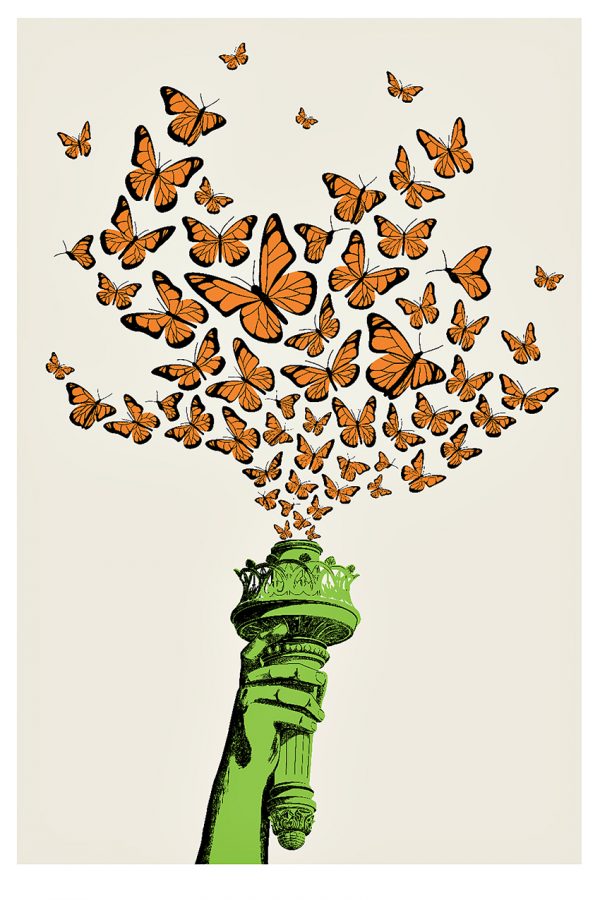This Wednesday, artists, designers and philanthropists will unite to try to change Texans’ lives through a mix of creativity and graphic design.
From 6:30 to 9 p.m., Texas Appleseed, a nonprofit and nonpartisan organization dedicated to resolving social justice issues in Texas, will host I Heart Justice, an artistic poster show, to raise awareness about these problems through art. The event will be hosted in conjunction with the American Institute of Graphic Arts, the professional association for design, and will examine five themes Texas Appleseed currently focuses on: the school-to-prison pipeline, homeless youth, criminal justice reform, fair housing and financial services.
“What we really wanted to do was share our work through a new medium,” Texas Appleseed executive director Deborah Fowler said. “We tend to convey our work for the most part through words and data and forums. To see the way in which the artists were able to really bring our advice to life on these issues through their art has been a real awakening for us internally.”
AIGA member Carla Fraser said the event hopes to bring societal issues that trouble the state into the limelight, regardless of attendees’ political affiliations.
“We don’t want people to look at this and say this is a Democratic position or this is a Republican position,” Fraser said. “This is a human position, and it is bringing this issue to life in a way that anyone looking at it who has a caring soul is going to be responsive.”
For the event, Wendy Carnegie, another member of AIGA, said the artists they invited to participate are a mix of both well-known and lesser-known artists. They hail from all around the state and are reflective of a diverse set of voices.
Contributing artist Tom Newton said he chose the theme of homelessness because he has encountered it on his daily commute in Houston.
“Every day on my drive home from work, I drive through a section of town where homeless people tend to gather and wonder, ‘What can I do?’” Newton said.
At first, Newton said he wasn’t sure how he would represent this struggle on paper, but thinking through the creative process has helped him develop a deeper understanding of the subject.
“I looked within myself, and I was like, ‘What kind of reactions do I have when I drive up the street and I see a homeless person?‘” Newton said.
In order to portray a true image of the issue, Newton said he began speaking to homeless people and reading more about the issue to try to understand their situation.
“I didn’t want to do a cliché,” Newton said. “Often, you see an advertisement that is about homelessness, and it will be a black-and-white photograph of somebody on the street in a cardboard box or under a blanket or curled up in a corner against the wall. (It’s a) sort of gritty, depressing view of homelessness.”
Jason Wilkins, another contributing artist and a design lecturer at UT, said the issue of the school-to-prison pipeline touched close to home.
“I have a relationship to knowing how education can help you elevate yourself from one life situation to another,” Wilkins said.
For Wilkins, expressing social problems through art is a way to help make them more understandable for audiences.
“To me, the virtue of graphic design and the medium of the poster can distill complex issues,” Wilkins said. “(It can) give them an emotive quality and be used as a tool for the public to censure those initial pieces they feel are unjust.”















